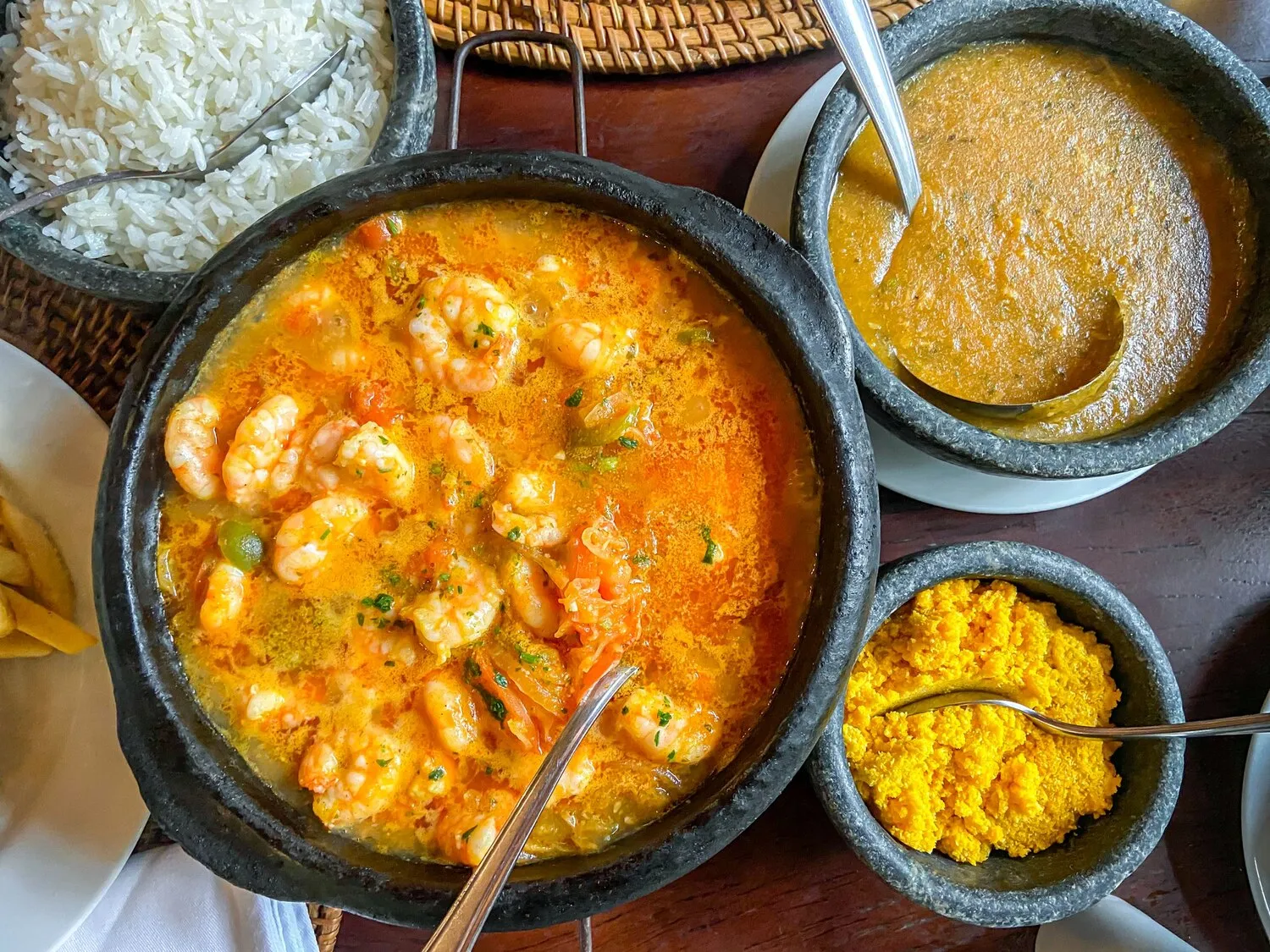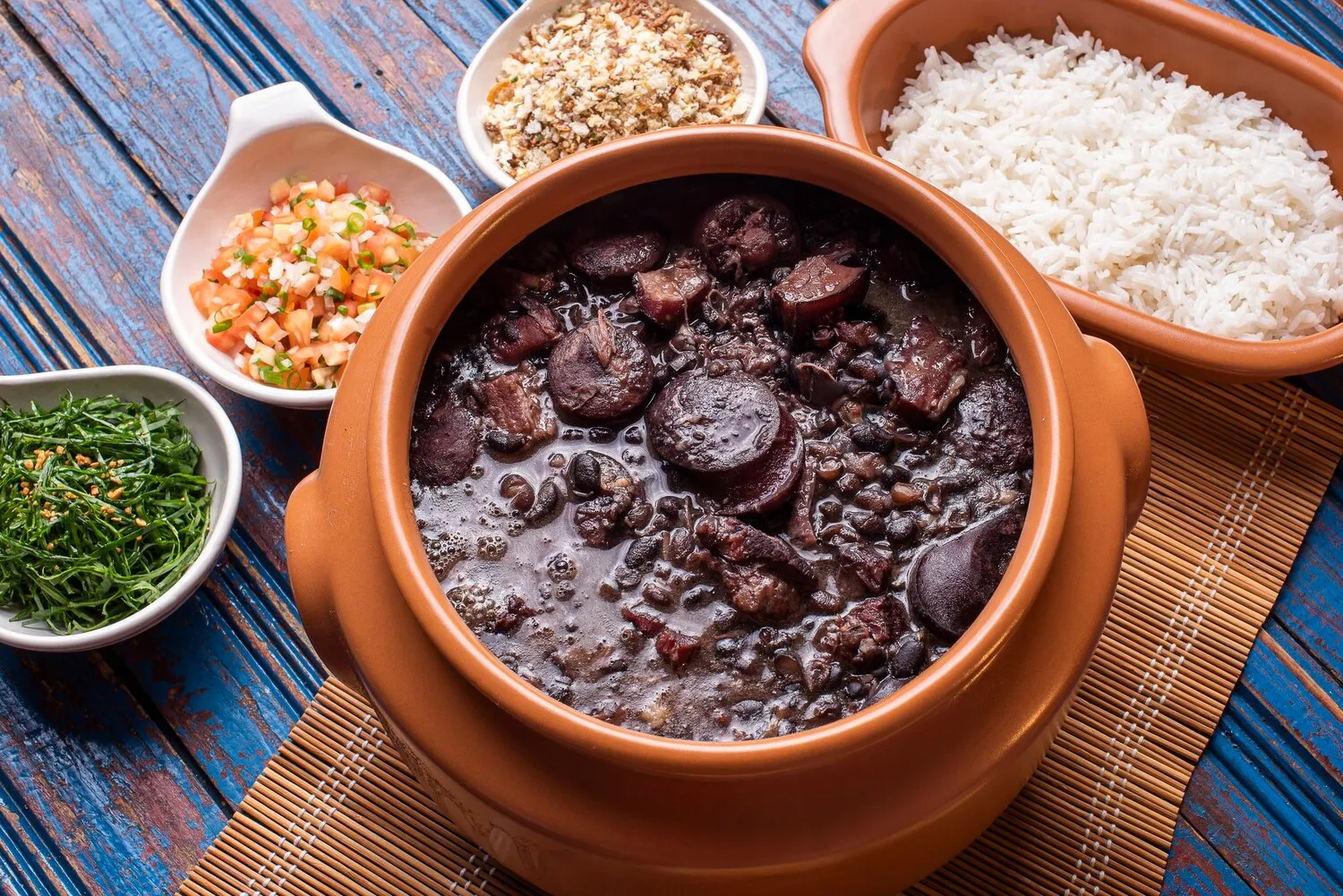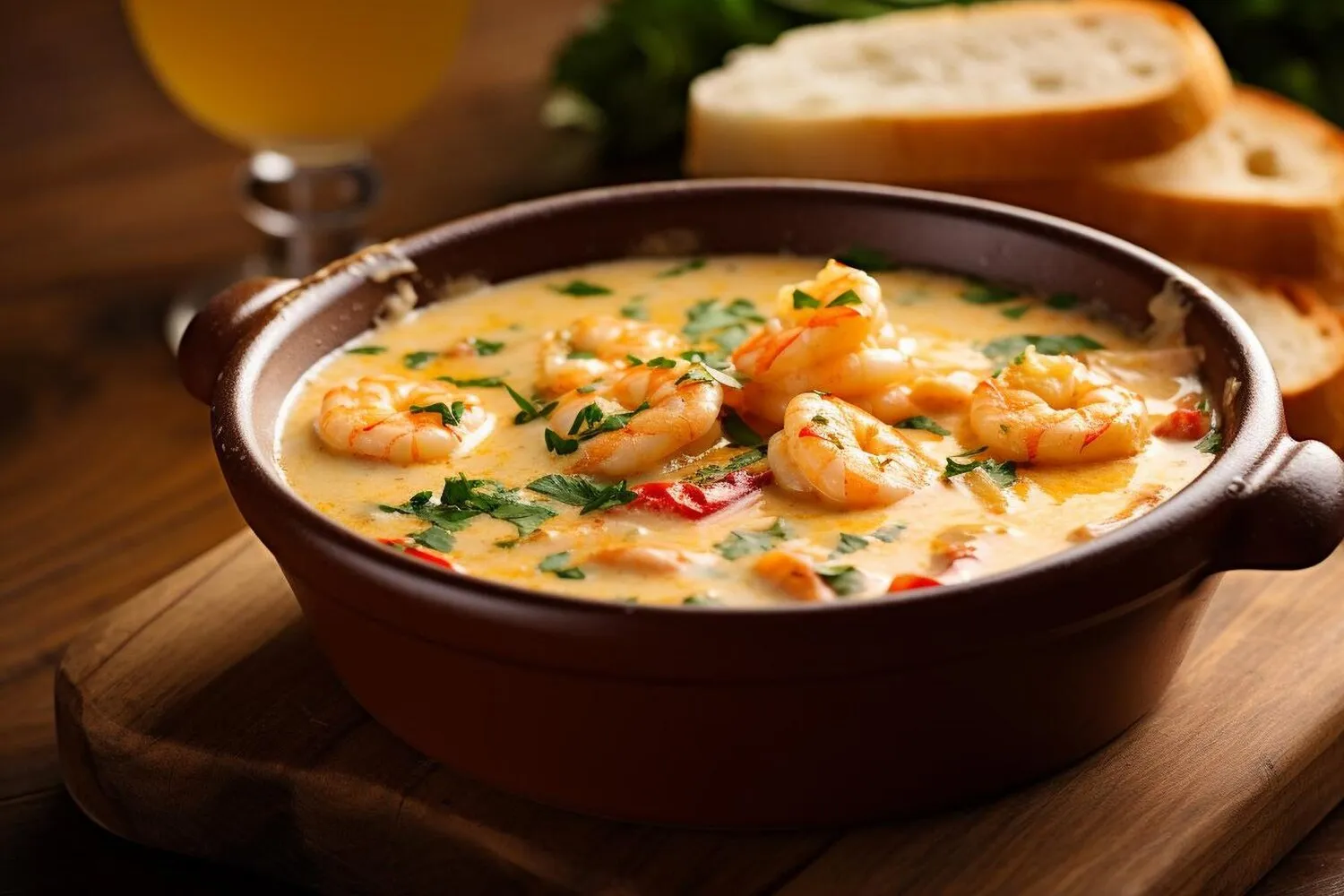
Moqueca Capixaba
A traditional Brazilian seafood stew made with fish or shrimp, tomatoes, onions, garlic, and cilantro, cooked in a clay pot. Served with pirão (manioc flour porridge) and rice.
Nutrition Facts
* The % Daily Value (DV) tells you how much a nutrient in a serving of food contributes to a daily diet. 2,000 calories a day is used for general nutrition advice.
Bananaland
Moqueca's history is deeply rooted in the indigenous, African, and Portuguese influences that shaped Brazilian cuisine. Indigenous Brazilians were already cooking stews in clay pots before the arrival of Europeans. African slaves brought their culinary traditions and ingredients, further enriching the dish. The Portuguese contributed techniques and ingredients like olive oil and onions.
Moqueca Capixaba is more than just a dish; it's a symbol of Espírito Santo's coastal identity and culinary heritage. It represents family gatherings, celebrations, and the simple pleasures of life by the sea. The preparation and sharing of Moqueca is a communal event.
Family Traditions
Moqueca recipes are often passed down through generations, with each family having its own unique twist on the classic dish. Preparing Moqueca together is a cherished family tradition, especially during holidays and special occasions.
Coastal Lifestyle
The dish is strongly associated with the coastal lifestyle of Espírito Santo, reflecting the abundance of fresh seafood and the importance of fishing in the region's culture and economy.
Regional Pride
Moqueca Capixaba is a source of regional pride, distinguishing Espírito Santo's cuisine from other parts of Brazil. It is often featured in culinary festivals and showcases of local gastronomy.
Moqueca Capixaba boasts a delicate and subtly sweet flavor profile, characterized by fresh seafood, aromatic vegetables, and the gentle heat of annatto. It is distinct from its Bahian counterpart due to the absence of dendê oil and coconut milk, resulting in a lighter, brighter taste.
The dominant flavor comes from the fresh fish or shrimp, which is gently simmered in a flavorful broth of tomatoes, onions, garlic, and cilantro. Annatto (urucum) adds a subtle, earthy sweetness and vibrant color. The absence of dendê oil and coconut milk allows the natural flavors of the seafood and vegetables to shine through, creating a lighter and more delicate taste than Moqueca Baiana. The stew is usually served with pirão (manioc flour porridge) which provides a neutral background and creamy texture to balance the flavors and rice which provides a starchy contrast.
Freshness is Key
Use the freshest possible fish or seafood for the best flavor. Look for firm flesh, clear eyes, and a fresh ocean smell. Snapper, sea bass, or shrimp are excellent choices.
The Clay Pot Matters
Traditionally, Moqueca is cooked in a clay pot (panela de barro), which imparts a unique earthy flavor to the dish. If you don't have a clay pot, a heavy-bottomed pot can be used as a substitute.
Don't Overcook the Seafood
The seafood should be cooked gently until just cooked through. Overcooking will make it tough and rubbery. A low and slow cooking process is key.
Layer the Flavors
Layer the ingredients carefully to build the flavors. Start with the onions and garlic, then add the tomatoes and peppers, and finally the seafood. This will ensure that all the flavors meld together harmoniously.
Explore additional Traditional Stew dishes and restaurants
Explore Traditional StewDiscover top dining spots and culinary experiences in Armação dos Búzios.
Explore Armação dos BúziosLearn more about the food culture, restaurant scene, and culinary heritage of Brazil.
Explore Brazil

